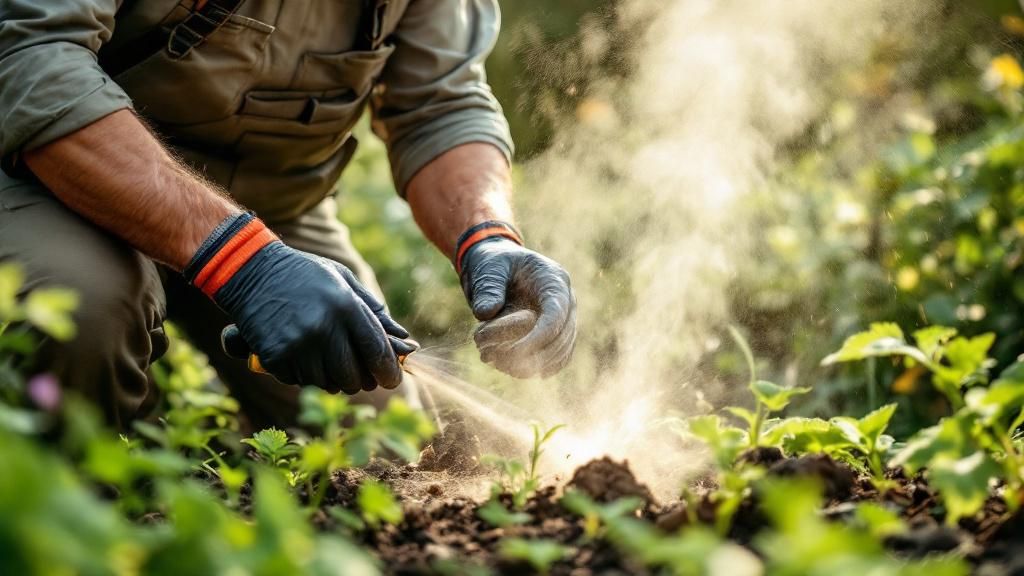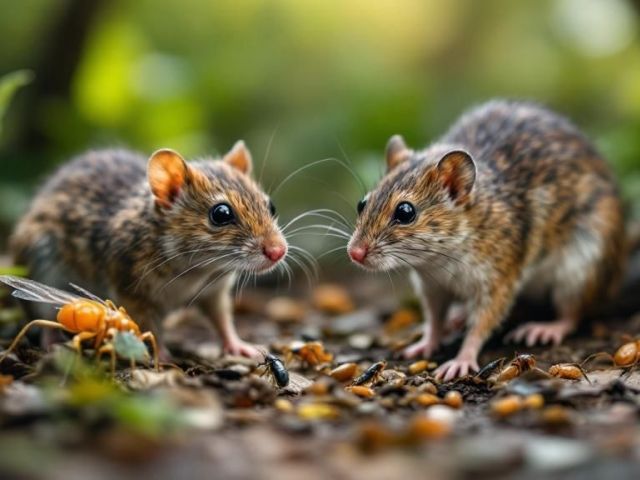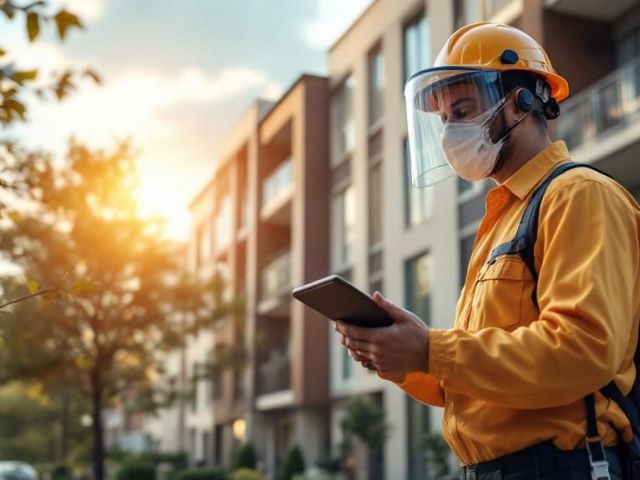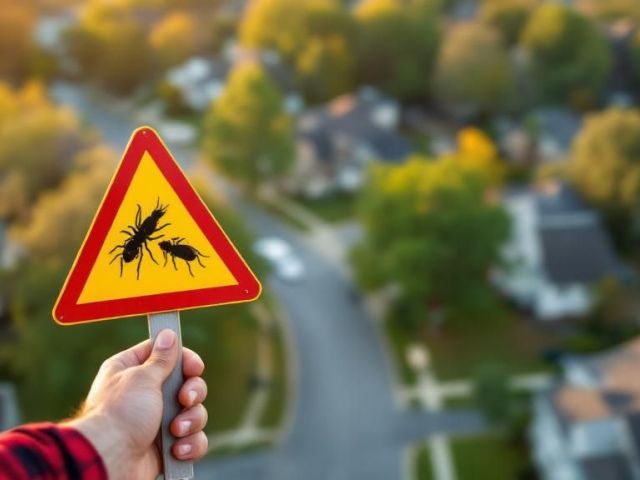Pest Control for Tennessee Homes: Why Integrated Pest Management (IPM) Is the Future
Key Takeaways
-
IPM is a long-term pest control strategy that prioritizes prevention, monitoring, and eco-friendly methods.
-
Reduces the need for repeated chemical treatments and minimizes risk to people, pets, and the environment.
-
Combines biological, physical, cultural, and targeted chemical tools to manage pests effectively.
-
Ideal for homeowners seeking cost-effective, sustainable, and tailored pest control solutions.
-
Trusted pest professionals like DOA Pest Service are increasingly using IPM in residential settings.
Traditional pest control often means spraying chemicals at the first sign of a problem. But in a world growing more conscious of health and environmental impact, Integrated Pest Management (IPM) is quickly becoming the smarter, more responsible choice for Tennessee homeowners. This article breaks down what IPM is, why it matters, and how it can help you enjoy a pest-free home without relying solely on chemicals.
What Is Integrated Pest Management (IPM)?
Integrated Pest Management is a proactive approach to controlling pests by addressing the root of the problem rather than just the symptoms. It was first adopted in agriculture to reduce chemical usage, but today, it’s an increasingly popular solution for homes, especially in urban and suburban areas.
Core Principles of IPM:
-
Monitor and identify pest activity
-
Understand pest behavior and life cycles
-
Use non-chemical methods as a first line of defense
-
Apply targeted, minimal-risk chemical treatments only when necessary
IPM is about making smart, informed choices that manage pests while keeping families, pets, and ecosystems safe.
How IPM Works in Residential Pest Control
For homeowners, IPM means fewer surprises and more control over recurring pest issues. The process is designed to be ongoing and adaptable, responding to seasonal pest behaviors and structural vulnerabilities around your property.
IPM in action typically includes:
-
Seasonal inspections to assess vulnerabilities
-
Pest monitoring tools like traps or sensor devices
-
Physical exclusion methods like sealing gaps and repairing screens
-
Biological controls such as introducing natural predators in outdoor areas
-
Spot treatments using the least toxic chemical option when absolutely needed
This thoughtful, multi-step approach not only prevents infestations but also reduces your home’s long-term exposure to harmful substances.

Why More Pest Control Professionals Are Embracing IPM
IPM isn’t just for organic farms anymore. Pest control companies across Tennessee are embracing this model as homeowners demand safer and smarter solutions. In fact, growing concerns about pesticide resistance, indoor air quality, and child/pet safety have made IPM a priority for responsible providers.
Professionals use strategies like pheromone traps for mating disruption or advanced sensors for real-time pest tracking. These innovative tools provide precise, data-driven insights—a welcome shift from blanket treatments.
One notable example is the use of goats for invasive plant management in Pittman Center, Tennessee. While it may sound unconventional, it highlights the IPM principle of using natural, sustainable solutions over synthetic ones whenever possible.
Debunking Common Myths About IPM
Despite its rising popularity, IPM is often misunderstood. Here are a few myths that need clearing up:
-
Myth 1: IPM is only for farms or large-scale operations.
-
Truth: It’s increasingly used in residential and urban settings with great success.
-
-
Myth 2: It takes too long to work.
-
Truth: IPM focuses on long-term prevention, but it can still offer fast results depending on the strategy.
-
-
Myth 3: IPM means no chemicals ever.
-
Truth: IPM does use chemicals when necessary, but in a minimal, targeted, and thoughtful way.
-
When implemented properly, IPM is flexible and can be customized for everything from cockroach control in kitchens to mosquito mitigation in backyards.
The Role of Technology in Modern IPM
IPM continues to evolve with advancements in smart home technology. From Wi-Fi enabled rodent traps to AI-based pest monitoring systems, data is helping professionals understand pest behavior in real-time and deliver targeted treatments.
Emerging technologies include:
-
AI-driven pest identification tools
-
IoT devices for tracking pest activity remotely
-
Drone-assisted inspections for large properties
These innovations not only improve accuracy but also reduce unnecessary pesticide use, aligning perfectly with the core mission of IPM.
Benefits of Choosing IPM for Your Home
Why homeowners are switching to Integrated Pest Management:
-
Fewer repeat infestations
-
Safer for children, pets, and sensitive individuals
-
Better for pollinators and garden biodiversity
-
Cost savings from fewer treatments over time
-
Supports long-term structural health of the home
Companies like DOA Pest Service are helping Tennessee residents adopt these practices by combining expert diagnostics with IPM-based service plans tailored to your specific home and pest issues.

Frequently Asked Questions
How is IPM different from standard pest control?
Standard pest control typically reacts to problems with broad chemical applications. IPM is a proactive, layered strategy that focuses on prevention and minimal risk.
Can IPM work in homes with children and pets?
Yes. In fact, it’s ideal for families because it reduces chemical exposure while still effectively managing pests.
What pests can IPM help control?
Everything from ants, cockroaches, and rodents to garden pests and termites—depending on the strategy used.
Is IPM more expensive?
Initially, it may require a bit more planning or monitoring. But over time, it often proves more cost-effective by reducing repeated infestations and damage.
Can I do IPM myself, or do I need a professional?
Some aspects of IPM (like sealing entry points or monitoring traps) can be DIY, but a pest professional can provide the diagnostics and expertise to maximize results.









